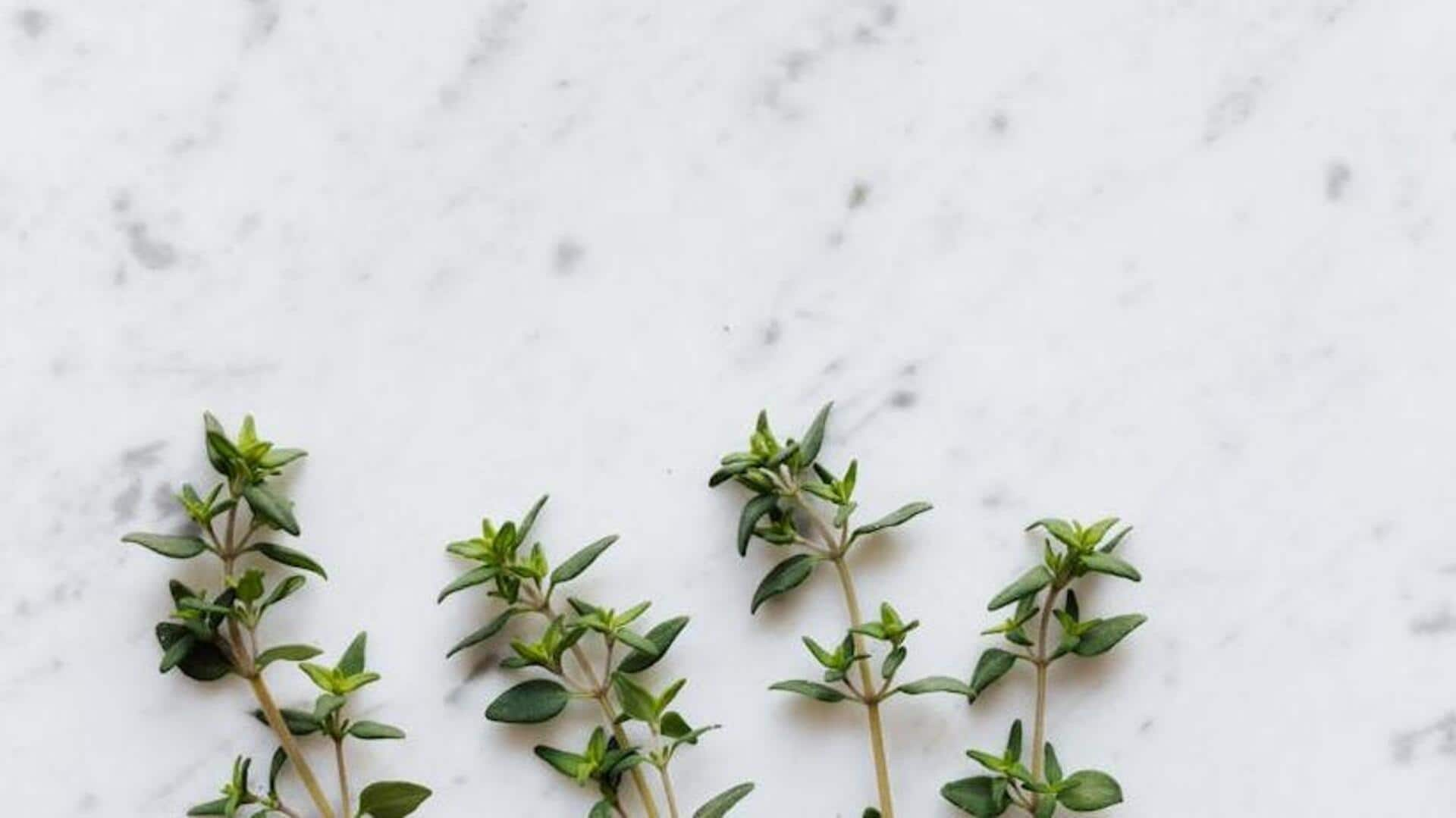
How to grow fresh thyme indoors
What's the story
Growing thyme indoors can be a rewarding experience, particularly when you are short on space.
The hardy herb is not only easy to maintain but also adds flavor to all kinds of dishes.
Given the right conditions and care, you can grow thyme easily in small spaces such as apartments or compact kitchens.
Knowing the essentials of light, soil, watering, and container choice will help you create an ideal environment for your thyme plants.
Container choice
Choosing the right container
Choosing the right container is essential for growing thyme indoors.
Go for pots that are at least six inches deep with drainage holes to avoid waterlogging.
Clay pots are a great option as they allow extra moisture to evaporate more easily than plastic ones.
Make sure that every pot has a saucer underneath to catch any excess water and protect surfaces from damage.
Light requirements
Providing adequate light
Thyme needs plenty of sunlight to thrive indoors.
Keep your pots on a windowsill where they can get at least six hours of direct sunlight every day.
If natural light falls short, try grow lights placed around 12 inches above the plants for 12-14 hours a day.
Shifting the position of your plants from time to time ensures even growth.
Soil and watering
Soil and watering needs
Use well-draining soil mixed with sand or perlite for optimal growth conditions.
Thyme prefers slightly dry soil, therefore, avoid overwatering by allowing the top inch of soil to dry out between waterings.
When watering, ensure that excess water drains away completely from the pot's bottom holes.
Pruning tips
Pruning and harvesting tips
Regular pruning encourages bushier growth in thyme plants, while preventing them from becoming leggy or woody over time.
Trim back stems by one-third every few weeks during active growth periods using clean scissors or shears.
Harvest leaves as needed by snipping off sprigs close to their base, without removing more than one-third of the plant at once.